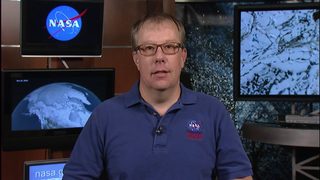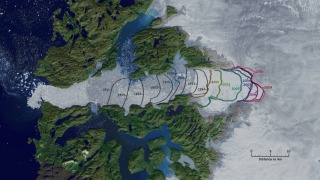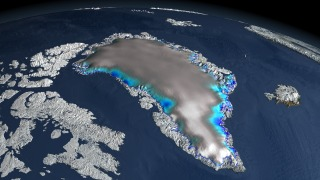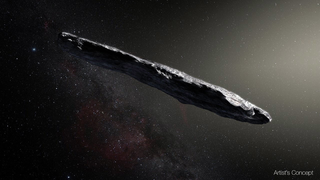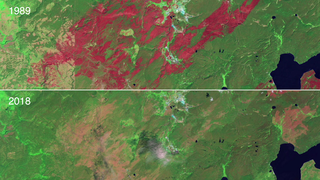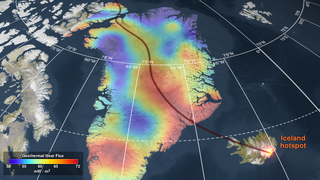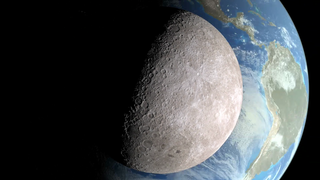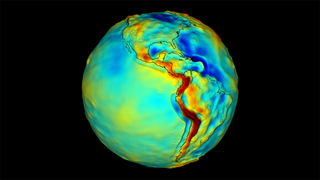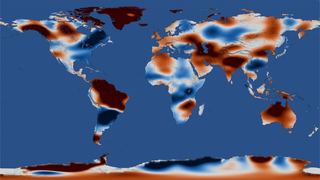Earth
ID: 10763
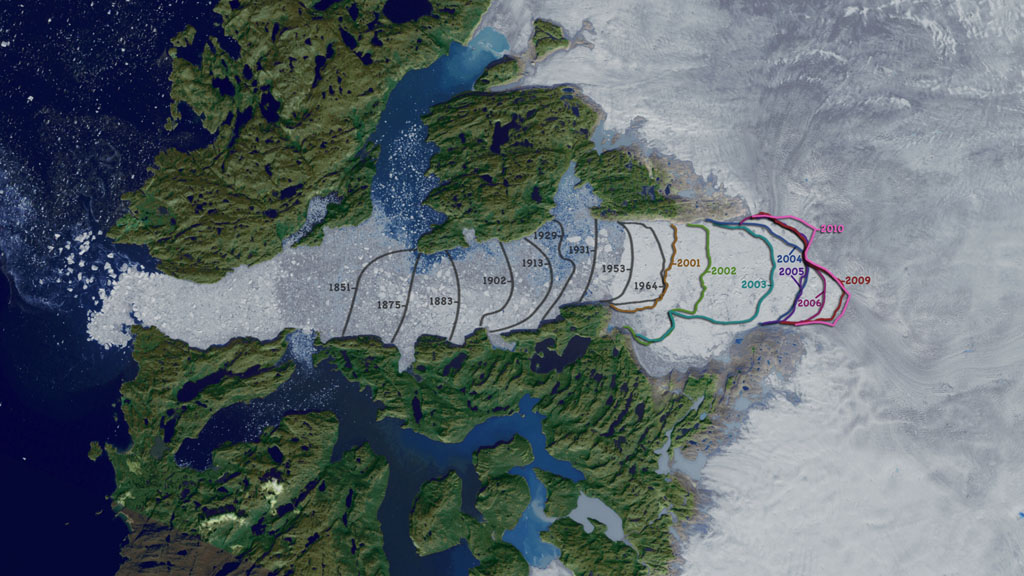
Once known for its size, the Jakobshavn Glacier in Greenland is now studied for its speed. In 1997 Jakobshavn ended a decades-long period of stability as it began to thin, accelerate and eject ice into the sea at a rapid rate. The glacier thinned by as much as 50 feet (15 m) per year between 1997 and 2003, according to NASA laser altimetry measurements, while other Greenland glaciers were thinning by about three feet (1 m) per year. The glacier now moves at more than nine miles (15 km) per year, doubling its speed from a decade ago. The glacier's calving front has retreated more than six miles (10 km) in the past decade alone. Scientists point to several warming-related causes for the increase in speed and retreat: meltwater can trickle through cracks in the ice and lubricate the friction point between ice and bedrock, and warmer ocean waters underneath the ice shelf also cause thinning. The thinner ice shelf and meltwater reduce resistance to glacier movement. As a glaciology case study and the greatest potential contributor to sea level rise in the Northern Hemisphere, scientists will continue to watch Jakobshavn closely.
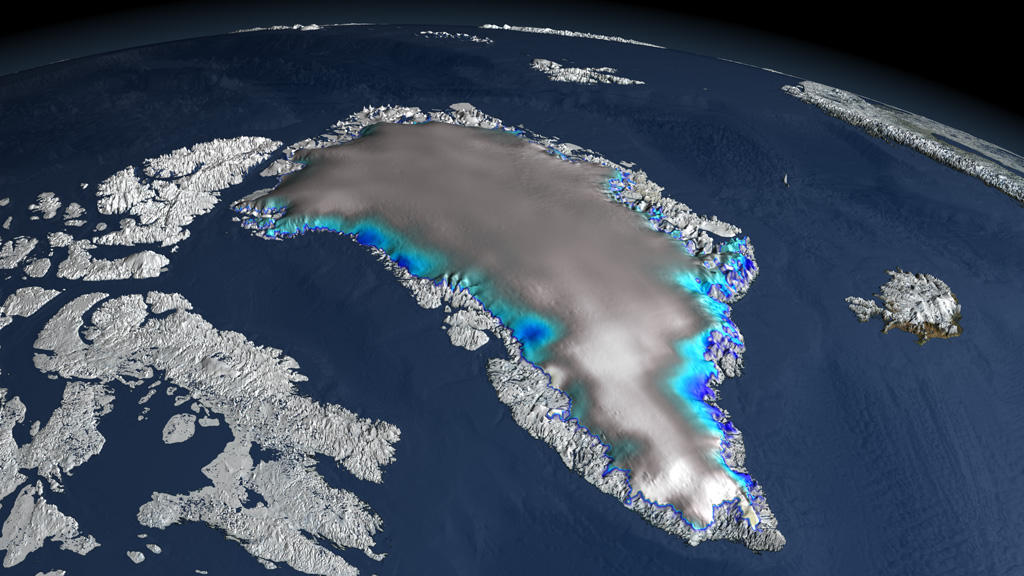
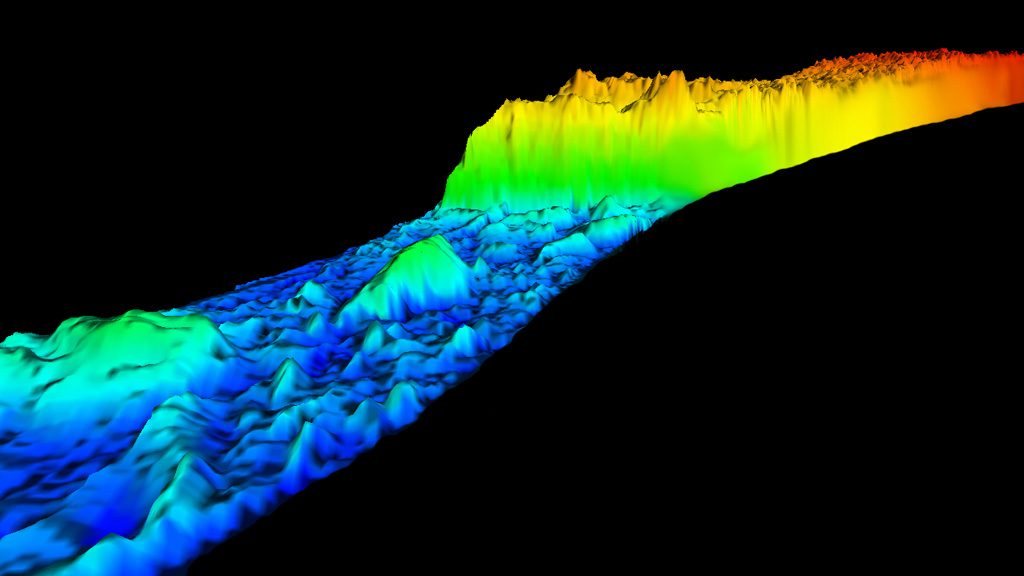

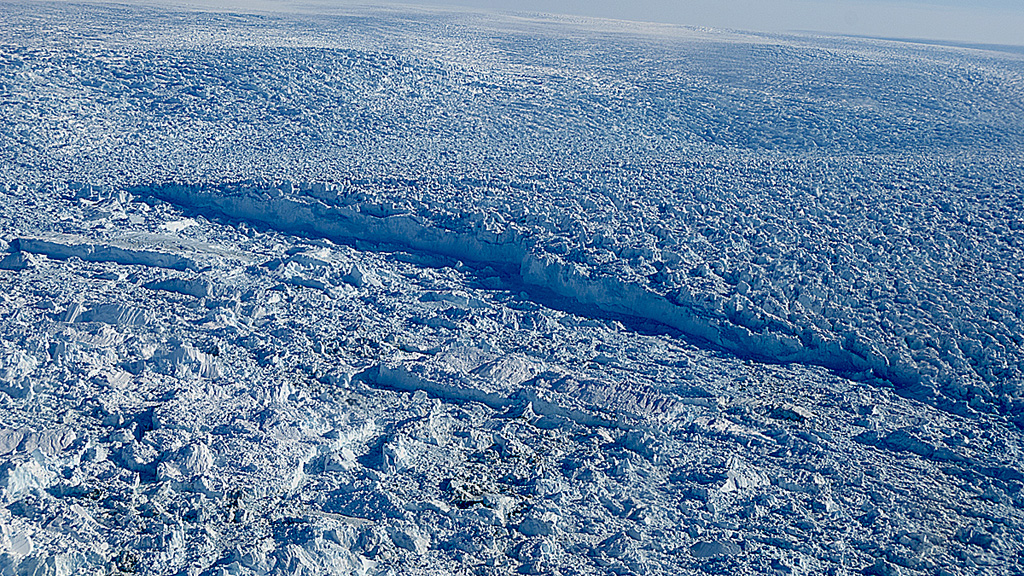
Racing off the Edge of Greenland





Alternate Version
Related Stories
Story Credits
Visualizer/Animator:
Cindy Starr (Global Science and Technology, Inc.)
Lead Writer:
Patrick Lynch (Wyle Information Systems)
Cindy Starr (Global Science and Technology, Inc.)
Lead Writer:
Patrick Lynch (Wyle Information Systems)
Please give credit for this item to:
NASA's Goddard Space Flight Center Scientific Visualization Studio
Image of 3D scan of Jakobshavn calving front courtesy of NASA's Airborne Topographic Mapper team
Photographs of Jakobshavn calving front courtesy of NASA's Digital Mapping System team
NASA's Goddard Space Flight Center Scientific Visualization Studio
Image of 3D scan of Jakobshavn calving front courtesy of NASA's Airborne Topographic Mapper team
Photographs of Jakobshavn calving front courtesy of NASA's Digital Mapping System team
Short URL to share this page:
https://svs.gsfc.nasa.gov/10763
Keywords:
SVS >> App
NASA Science >> Earth
https://svs.gsfc.nasa.gov/10763
Keywords:
SVS >> App
NASA Science >> Earth

